Did Abandoning the Gold Standard Get Us Out of the Depression?
Greg Mankiw has come out of his shell lately on his blog. Whenever I visited in the past, I would quickly move on because he would offer links with at most a sentence of commentary. Unfortunately, now he is devoting his writing skills to pushing the benefits of massive inflation.
Last week Mankiw wrote an op ed for the NYT saying the Fed should promise large inflation in the future, in order to push the “real” (inflation-adjusted) interest rate into negative territory. Apparently many readers were upset–imagine that!–and Mankiw has been defending his flank ever since. In his most recent defense he writes:
As to the Fed announcing a commitment to a moderate amount of inflation, let me point out that according to many macroeconomic historians, the abandonment of the gold standard was the most useful thing that the federal government did to get the country out of the Great Depression. A commitment to producing a moderate amount of inflation would be the modern equivalent of that act.
As I argue in my new book, The Politically Incorrect Guide to the Great Depression and the New Deal, this hostility to the gold standard is misplaced. Before we delve into the economic theory, just consider the brute historical facts: In prior US depressions (or “panics”), when the US dollar was tied to gold, the country began to recover typically within about two years. In contrast, it wasn’t until the governments of the world all abandoned gold, that the entire world was mired in the worst downturn in history, and for a decade to boot!
Let me dispatch with an obvious response. Mankiw could say, “Well sure, the gold standard tied the hands of central bankers, but it had an irrational aura of inviolability, and so it’s not surprising that it took the worst downturn ever to finally get the Fed to drop the barbarous relic. The US economy turned around on a dime the moment FDR severed the tie to gold.”
But no, that doesn’t quite work either. If it were really true that it was the gold standard holding the US in Depression, then surely, say, five years after FDR severed the link, the economy should have been humming, right? But the official unemployment statistics (and note these BLS figures don’t count people receiving WPA checks as having a real job) record that in 1938–five years into the New Deal–the unemployment rate averaged 19%. So when people tout how great things were for the US economy once we ditched gold, keep that in mind. Yes, 19% is lower than 25% (the rate in 1933), but to repeat, in all prior US history, a depression would have been long gone five years after the trough.
But now let’s use economic theory to make sense of these undeniable historical facts. I argue in the book that the one thing that set the Great Depression apart from its earlier peers was that Herbert Hoover subscribed to an underconsumptionist theory of the business cycle. After the stock market crash in 1929, Hoover called all the big business leaders to Washington and told them not to cut wage rates, because (he thought) to do so would simply reduce incomes and hence would exacerbate the downturn in spending on business.
So what happened is that workers’ paychecks fell much more slowly than prices in general, during the 1929-1933 period. In fact, workers’ “real” wages (i.e. actual dollar amount adjusted for falling prices) rose more quickly during this period than they had during the Roaring Twenties! So it’s no wonder that unemployment rates skyrocketed, because the relative price of labor kept rising even amidst horrible business losses.
In this context, running the printing press could provide at least short term relief, and I believe that is the explanation for Brad DeLong’s favorite chart. If the government (in concert with unions) is enforcing very severe nominal wage rigidity, then the normal price deflation during a depression will be catastrophic. By freeing central banks of their obligations to redeem currency for gold, they were given the ability to run the printing press and push prices back up, easing the massive surplus in the labor market.
But it would be very queer to describe the high unemployment of the early 1930s as the fault of the gold standard. No, the blame rests squarely on government policies (and support for unions) that kept wage rates above their free market levels. In the 1920-1921 depression, for example, prices in the US fell much more quickly than they did during any single year of the 1930s, but unemployment spiked at 11.7% and then was down to 2.4% by 1923.
The reason? Wages fell even more quickly than prices; they dropped 20% in a single year. At the time Herbert Hoover (Harding’s Commerce Secretary) was horrified, but it was a much better outcome than what his “compassionate” policies would unleash on workers a decade later.
Scott Sumner Restores My Faith in Economists
Wow. I am totally blown away by Scott Sumner’s blog, The Money Illusion. He is a Chicago PhD who specializes in the gold standard and the Great Depression. I don’t even necessarily agree with his overall views, but WOW his posts are really really good. It’s what I would have expected from nerdy academic economists before I actually saw the real world buffet available for sampling. People have been linking to him a lot, but for some reason I never clicked on it until DeLong linked to him recently.
In particular, check out this post on Friedman and Schwartz’s success with their Monetary History. It is a very long post and you need to just sit down and read it (if it interests you), but here is an excerpt to show why I am so impressed with this guy:
The difference between my view and Krugman’s view cannot be resolved through econometrics, it is a complex question of interpretation, including how one thinks about the relevant counterfactuals. For instance, for me the relevant counterfactual is what would have happened if the Fed had abandoned the gold standard as soon as it began to constrain their policy. We know that after they did so in 1933, NGDP rose very rapidly. So what Krugman views as evidence of monetary policy ineffectiveness (say the failed 1932 open market purchase program), I view as merely reflecting the constraints of the international gold standard. On the other hand Krugman could point to recent liquidity traps in Japan and the U.S., which occurred under fiat money regimes. And you already know my views on those episodes.
One of the things that has most puzzled me about recent events is that many of the very same economists who were persuaded by F&S’s evidence, most notably Ben Bernanke, now seem strangely passive in their evaluation of current Fed policy options. And almost none blame the Fed for the rapid decline in NGDP that began last September. So does that mean Krugman wins the argument? More likely it means both Krugman and I will lose in the short run.
Will New Fed "Tools" Avert Hyperinflation?
My sources say no. An excerpt:
For a different idea, economists Woodward and Hall think the Fed just needs the ability to charge banks for holding reserves….How does this avert the threat of hyperinflation? Simple, according to Woodward and Hall. If banks ever start loaning out too much of their (now massive) excess reserves, and thereby start causing large price inflation, then the Fed can simply raise the interest rate it pays on reserves. Banks would then find it more profitable to lend to the Fed, as it were, rather than lending reserves out to homebuyers and other borrowers in the private sector. Voila! Problem solved.
Obviously these tricks can’t avoid the consequences of Bernanke’s mad money printing spree. At best, they would merely push back the day of reckoning, while ensuring that it grows exponentially (quite literally).
A quick numerical example: Let’s say the Fed wants to drain $100 billion in reserves out of the banking system, in order to cool off rising prices. But it doesn’t want to sell off some of its assets on its balance sheet (like “toxic” mortgage-backed securities), so instead the Fed sells $100 billion worth of the brand new “Fed bonds,” as Yellen hopes.
In the beginning, this will indeed solve the problem. When people in the private sector buy the Fed-issued bonds, they write checks on their banks and ultimately those banks see their reserves go down at the Fed. There is less money held by the public, and so prices don’t rise as quickly.
But what happens when the Fed bonds mature? For example, if the Fed sold a 12-month bond paying 1% interest, then after the year has passed our private sector buyers will hand over the securities and now their checking accounts will be credited with $101 billion. At that point, the economy would be in the same position as before, only worse: there would be an extra billion in newly created reserves (because of interest on the Fed debt).
Incidentally, the Daily Reckoning doesn’t do hyperlinks, so here are some of the things I relied on for the article:
* The CBO analysis of Obama’s 10-year budget plan,
* The CBO’s forecast in 2001 of $5.6 trillion in surpluses over the next decade,
* Janet Yellen discussing Fed debt as as “exit strategy,”
* Woodward and Hall discussing positive and negative interest on reserves as a way to avoid hyperinflation.
Private Law and the Somalis
Dick Clark the Younger has an interesting article that he adapted from an actual law school assignment. An excerpt:
Because I recognize that government courts serve primarily to advance the interests of government power, my goals as an aspiring attorney are to use what I can from my legal education to work against the State—to oppose government action where private, voluntary action would better serve the interests of justice. It is the subsequent question—“How can private actors be entrusted with the provision of public goods like defense and justice?”—that makes a book like The Law of the Somalis important.
Van Notten, a Dutch lawyer, lived with the Somali people and applied his legal expertise to learning and understanding the Xeer, the traditional Somali legal system that has developed over thousands of years. The Xeer is remarkable because it is not dependent on a central government authority, but instead relies on familial, economic, and cultural pressures to insure that justice is done. While the details of the system leave some things to be desired—equal rights for women and greater alienability of property outside of the clan, for starters—it is based on core principles which are admirable and reasonable…
The Real Lessons of the Great Depression
Since late 2007, more and more commentators have drawn parallels between our current financial crisis and the Great Depression. Nobel laureates and presidential advisors [pdf] confidently proclaim that it was Herbert Hoover’s laissez-faire penny pinching that exacerbated the Depression, and that the American economy was saved only when FDR boldly ran up enormous deficits to fight the Nazis. But as I document in my new book, The Politically Incorrect Guide to the Great Depression and the New Deal, this official history is utterly false.
Let’s first set the record straight on Herbert Hoover’s fiscal policies. Contrary to what you have heard and read over the last year, Hoover behaved as a textbook Keynesian after the stock market crash. He immediately cut income tax rates by one percentage point (applicable to the 1929 tax year) and began ratcheting up federal spending, increasing it 42 percent from fiscal year (FY) 1930 to FY 1932.
But to truly appreciate Hoover’s Keynesian bona fides, we must realize that this enormous jump in spending occurred amidst a collapse in tax receipts, due both to the decline in economic activity as well as the price deflation of the early 1930s. This combination led to unprecedented peacetime deficits under the Hoover Administration—something FDR railed against during the 1932 campaign!
How big were Hoover’s deficits? Well, his predecessor Calvin Coolidge had run a budget surplus every single year of his own presidency, and he held the federal budget roughly constant despite the roaring prosperity (and surging tax receipts) of the 1920s. In contrast to Coolidge—who was a true small-government president—Herbert Hoover managed to turn his initial $700 million surplus into a $2.6 billion deficit by 1932.
It’s true, that doesn’t sound like a big number today; Henry Paulson handed out more to bankers by breakfast. But keep in mind that Hoover’s $2.6 billion deficit occurred because he spent $4.6 billion while only taking in $2 billion in tax receipts. Thus, as a percentage of the overall budget, the 1932 deficit was astounding—it would translate into a $3.3 trillion deficit in 2007 (instead of the actual deficit of $162 billion that year). For another angle, I note that Hoover’s 1932 deficit was 4 percent of GDP, hardly the record of a Neanderthal budget cutter.
The real reason unemployment soared throughout Hoover’s term was not his aversion to deficits, or his infatuation with the gold standard. No, the one thing that set Hoover apart from all previous U.S. presidents was his insistence to big business that they not cut wage rates in response to the economic collapse. Hoover held a faulty notion that workers’ purchasing power was the source of an economy’s strength, and so it seemed to him that it would set in motion a vicious cycle if businesses began laying off workers and slashing paychecks because of slackening demand.
The results speak for themselves. During the heartless “liquidationist” era before Hoover, depressions (or “panics”) were typically over within two years. Yes, it was surely no fun for workers to see their paychecks shrink quite rapidly, but it ensured a quick recovery and in any event the blow was cushioned because prices in general would fall too.
So what was the fate of the worker during the allegedly compassionate Hoover era, when “enlightened” business leaders maintained wage rates amidst falling prices and profits? Well, Econ 101 tells us that higher prices lead to a smaller amount purchased. Because workers’ “real wages” (i.e. nominal pay adjusted for price deflation) rose more quickly in the early 1930s than they had even during the Roaring Twenties, businesses couldn’t afford to hire as many workers. That’s why unemployment rates shot up to an inconceivable 28 percent by March 1933.
“This is all very interesting,” the skeptical reader might say, “but it’s undeniable that the huge spending of World War II pulled America out of the Depression. So it’s clear Herbert Hoover didn’t spend enough money.”
Ah, here we come to one of the greatest myths in economic history, the alleged “fact” that U.S. military spending fixed the economy. In my book I relied very heavily on the pioneering revisionist work of Bob Higgs, who has shown in several articles and books that the U.S. economy was mired in depression until 1946, when the federal government finally relaxed its grip on the country’s resources and workers.
For a fuller exposition, you’ll (naturally) have to buy my book. But here’s the quick summary: Sure, unemployment rates dropped sharply after the U.S. began drafting men into the armed forces. Is that so surprising? By the same token, if Obama wanted to reduce unemployment today, he could take two million laid-off workers, equip them with arm floaties, and send them to fight pirates. Voila! The unemployment rate would fall.
The official government measures of rising GDP during the war years is also misleading. GDP figures include government spending, and so the massive military outlays were lumped into the numbers, even though $1 million spent on tanks is hardly the same indication of true economic output as $1 million spent by households on cars.
On top of that distortion, Higgs reminds us that the government instituted price controls during the war. Normally, if the Fed prints up a bunch of money to allow the government to buy massive quantities of goods (such as munitions and bombers, in this case), the CPI would go through the roof. Then when the economic statisticians tabulated the nominal GDP figures, they would adjust them downward because of the hike in the cost of living, so that “inflation adjusted” (real) GDP would not look as impressive. But this adjustment couldn’t occur, because the government made it illegal for the CPI to go through the roof. So those official measures showing “real GDP” rising during World War II are as phony as the Soviet Union’s announcements of industrial achievements.
I have only scratched the surface in this article of all the myths surrounding the Great Depression and the New Deal era. For example, we are also constantly told—this time by Chicago economists, not Keynesians—that “we learned in the Depression” that the Fed needs to rapidly expand the monetary base to avert disaster. Oops, turns out that’s bogus too. But you’ll have to buy my book to learn why.
This article first ran on LewRockwell.com.
Why Did Texas Skirt the Housing Crash?
Von Pepe sends me this interesting analysis of the relatively moderate boom/bust in Texas house prices.
The analyst thinks the answer is that Texas law prohibits prepayment penalties. In other words, homeowners in Texas were allowed to pay down their mortgages ahead of schedule, without being penalized by the lender. He concludes:
I also want to get away from the duality of thinking of the subprime crisis as evil banks looting homeowners or evil lenders tricking banks. With the genius of prepayment penalties, banks didn’t have to make money by lending loans to credible homeowners – they could form a de facto company with unqualified borrowers to bet on house prices rising. The prepayment penalty was the bank’s equity in this endeavor. Or another way to say it is that the banks found a way to hire a person to sit in a house they wanted to gamble on; this was a subprime loan with a prepayment penalty. More to follow.
An interesting theory; I would like to see some more evidence though before signing off on it. (And the guy promises to do more research in future posts.) For example, if he could show that all or most states that banned prepayment penalties experienced low default rates, and in particular if he showed that the worst states all allowed the penalties, then that would be something.
In any event, I wrote an article defending prepayment penalties back when primary presidential candidate Hillary Clinton proposed abolishing them. An excerpt:
[I]t actually hurts borrowers (and lenders) when possible, voluntary contracts are declared inadmissible. Despite the presidential candidates’ desires to mother all of us, most people aren’t nearly as incompetent as the politicians would have us believe, especially when it comes to huge decisions such as financing a home purchase. The reason some borrowers are willing to sign contracts that include prepayment penalties is that the interest rate is correspondingly lower. If you think a prepayment penalty is absurd, you don’t need Hillary Clinton to rescue you. You can simply choose to take out a mortgage without a prepayment penalty (and pay a slightly higher interest rate because of your decision). Pretty simple, eh?
What most people don’t realize is that helping the borrower by giving him the option of prepaying the mortgage necessarily hurts the lender. When the bank lends you $200,000 to buy a house, it needs to compare the pros and cons of that loan with other possible investments. For example, it could have bought $200,000 worth of government bonds instead. Now from the bank’s point of view, one of the benefits of the mortgage loan is that it pays a higher rate of return than the government bond. But one of the drawbacks is that, if interest rates drop, the homeowner can refinance, whereas Uncle Sam can’t call in his bonds…
In other words, when the bank is planning its cash flows into the future, it is far more confident in fixed payments…as opposed to payment streams that might suddenly stop (such as a homeowner who refinances). In the financial community this is called prepayment risk. And guess what? If bankers are going to take on riskier investments, they require correspondingly higher expected returns. That’s part of the reason that mortgage rates are higher than U.S. bond rates…Including prepayment penalties in mortgage contracts mitigates this risk, and so allows the lender to charge a lower interest rate than he would accept without such a built-in compensation.
Worst Job in the World: White House Press Secretary
This is hilarious. I heard this on the radio and had to share it. I only could stand the first 80 seconds or so, but make sure you listen for the male reporter who jumps in. Seriously, I understand why politicians lie–it’s good to be the king. But what’s in it for the press secretary? Wouldn’t you break out in boils or something from this job?
Government Report: "Oops We Aren’t Good With Taxpayer Money"
According to CNBC:
In a 250-page quarterly report to Congress, TARP’s special inspector general concludes that a private-public partnership designed to rid financial institutions of their “toxic assets” is tilted in favor of private investors and creates “potential unfairness to the taxpayer.”
In related news, the National Academy of Sciences released a report saying that water runs downhill.

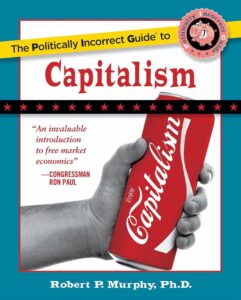
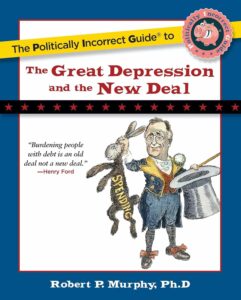
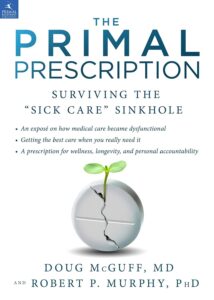

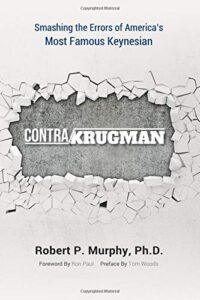
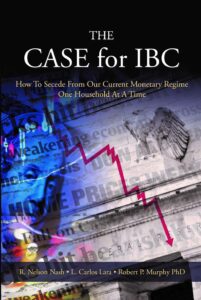
Recent Comments